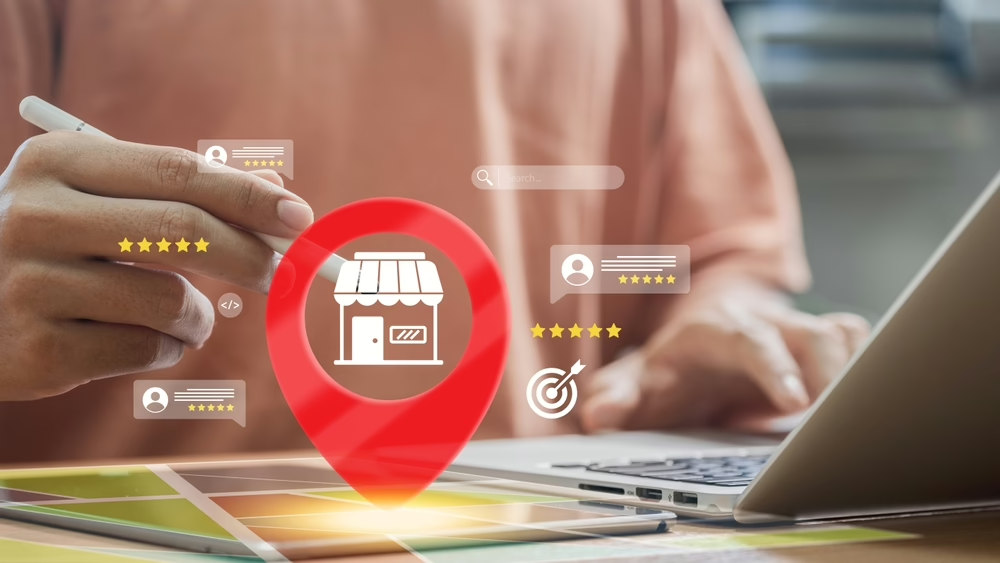
Remarketing vs Retargeting: What Is the Best Use for Each?
Retargeting is one of the most popular digital marketing strategies, focusing on showing customized advertisements to potential customers who visit a site without buying anything. These customers browsed products, liked or saved items, or filled their shopping carts without completing purchases.
People use remarketing and retargeting interchangeably, but these are different and used in varying situations. This guide is about:
 Retargeting is part of an effective marketing strategy that lures potential customers to your website by providing personalized ads through various platforms. Marketers can retarget through display ads, text ads, video ads, in-app ads, social media ads, and more. Retargeting is very useful in the following scenarios:
Retargeting is part of an effective marketing strategy that lures potential customers to your website by providing personalized ads through various platforms. Marketers can retarget through display ads, text ads, video ads, in-app ads, social media ads, and more. Retargeting is very useful in the following scenarios: Remarketing often uses email marketing to recapture the attention of customers who have already bought a product or ordered a service from a company. Marketers can only remarket if they have access to customers’ email addresses. These could be acquired from the business’ customer database, email list, or newsletter subscription list. Remarketing is effective in the following ways:
Remarketing often uses email marketing to recapture the attention of customers who have already bought a product or ordered a service from a company. Marketers can only remarket if they have access to customers’ email addresses. These could be acquired from the business’ customer database, email list, or newsletter subscription list. Remarketing is effective in the following ways:
- Best uses of retargeting and
- Best uses of remarketing.
Are you looking for a full-service digital marketing agency? See the DAP difference below!
Best Uses of Retargeting
 Retargeting is part of an effective marketing strategy that lures potential customers to your website by providing personalized ads through various platforms. Marketers can retarget through display ads, text ads, video ads, in-app ads, social media ads, and more. Retargeting is very useful in the following scenarios:
Retargeting is part of an effective marketing strategy that lures potential customers to your website by providing personalized ads through various platforms. Marketers can retarget through display ads, text ads, video ads, in-app ads, social media ads, and more. Retargeting is very useful in the following scenarios:1. Recovery of Abandoned Shopping Carts
Sometimes customers change their minds at the last minute. They add items to their shopping carts but don’t proceed to checkout. With retargeting ads, businesses can remind customers of the products they left in their carts. They can add discounts, incentives, and customized messages to encourage customers to complete their purchases.2. Improving Website Visitor Engagement
Retargeting helps businesses contact users who have checked their websites. They use this opportunity to re-engage using relevant content, updates, or special offers to put their brand on top of their users’ minds and entice them to return.3. Upselling and Cross-Selling
Once users purchase from the business’s website, companies use retargeting campaigns to show them related products. They can also use retargeting to upsell users to a more updated or higher-priced product. Businesses can improve order value and increase revenue by retargeting people interested in their brand.4. Enhancing Customer Loyalty and Repeat Purchases
Retargeting promotes customer loyalty because businesses then share exclusive promotions, recommendations, and rewards programs. Doing so encourages customers to reorder from the website and prefer it to other e-commerce sites. These significantly improve customer relationships.5. Promoting Events
Retargeting can also promote events related to customer purchases. Businesses can host seminars, workshops, or other events, and the retargeted ads can serve as invitations to those who had previously shown interest in the same or similar events. These ads help remind them of the upcoming event, highlight the key benefits, and encourage them to register or sign up.6. Generating Leads
Retargeting is also an effective way to nurture leads and move them further down the sales funnel. By retargeting users who have shown initial interest but haven’t converted yet, businesses can deliver relevant content, educational materials, or special offers to build trust and encourage customers to take the desired action.Best Uses of Remarketing
 Remarketing often uses email marketing to recapture the attention of customers who have already bought a product or ordered a service from a company. Marketers can only remarket if they have access to customers’ email addresses. These could be acquired from the business’ customer database, email list, or newsletter subscription list. Remarketing is effective in the following ways:
Remarketing often uses email marketing to recapture the attention of customers who have already bought a product or ordered a service from a company. Marketers can only remarket if they have access to customers’ email addresses. These could be acquired from the business’ customer database, email list, or newsletter subscription list. Remarketing is effective in the following ways:1. Re-Engagement of Inactive Customers
A list of customers who haven’t purchased or engaged with the brand for a while can be re-engaged using remarketing emails. You can send special offers, exclusive discounts, or personalized content to remind them of your brand and encourage them to take action.2. Upselling and Cross-Selling
After a customer makes a purchase, businesses can use remarketing emails to promote complementary or upgraded products. Marketers can send emails highlighting compatible camera accessories such as lenses, filters, tripods, bags, and cleaning kits if someone purchases a camera. They can also receive emails related to photography workshops. By highlighting the value and benefits of these additional products or services, businesses can increase the customer’s lifetime value and revenue.3. Recovering Abandoned Carts
Remarketing is an excellent way to entice customers to come back and purchase items in their shopping carts. Businesses can send customers a series of reminder emails to complete their transactions. These remarketing emails can include customized product recommendations based on the contents of their abandoned carts. Limited-time discounts and other incentives to re-engage these customers are often included.4. Providing Personalized Recommendations
Based on a customer’s browsing history, previous purchases, or brand interactions, businesses can send remarketing emails to them with personalized product recommendations. These recommendations can be tailored to a person’s preferences and buying behavior (like in behavioral remarketing). These can improve conversions.5. Offering Exclusive Promotions and Discounts
Remarketing emails are also helpful in rewarding loyal customers with exclusive promotions or discounts. Businesses can use these methods to make their customers feel valued and appreciated and encourage them to make repeat purchases and become loyal customers.6. Reminding Customers to Replenish Their Stocks
For businesses that sell consumable or subscription-based products, remarketing emails can remind customers when it’s time to reorder their stocks. For example, if a company sells water filters, it can send automated remarketing emails to remind customers to change their filters and order them after a certain period of time has passed. A company that develops custom software can use remarketing emails to remind customers about updates, maintenance, and additional support.7. Inviting Customers to Exclusive Events
Remarketing emails also effectively promote workshops, webinars, or other events to people who have previously shown interest in or joined similar events. These emails can include event details, highlights, and registration links to encourage people to register and attend. They can click on links in this email to immediately take them to the event registration page.Summing Up
Retargeting focuses on re-engaging customers or audiences through different forms of advertising, including visual ads, social media ads, and search engine ads. On the other hand, remarketing often uses sales or marketing emails to reconnect with customers. Despite their differences, both are effective in recovering abandoned carts, improving engagement, upselling and cross-selling, and enhancing loyalty. Marketers can use both strategies to promote events and offer exclusive promotions and discounts. Learn more about retargeting and remarketing by partnering with an expert remarketing agency. Contact Digital Authority Partners (DAP), and let’s talk remarketing.Want To Meet Our Expert Team?
Book a meeting directly here



